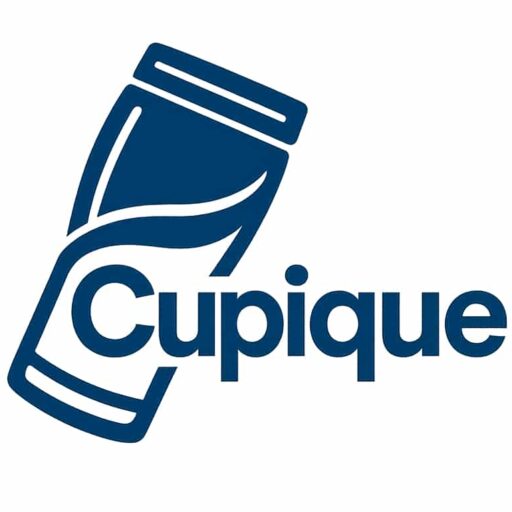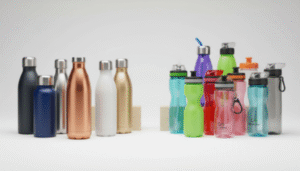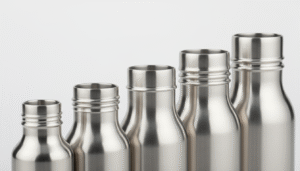
Ceramic-coated stainless steel water bottles offer three key B2B sourcing advantages: complete taste neutrality for brand protection, affordable premium positioning without 316 steel costs, and superior hygiene appeal that aligns with health-conscious markets.
I have been manufacturing stainless steel bottles for over 10 years at Cupique. During this time, I have seen countless B2B buyers struggle with the same challenge. They want premium products that justify higher prices, but standard 304 steel bottles all look the same. Ceramic coating changes this game completely.
Ceramic-coated bottles eliminate metallic taste issuesTrue
Ceramic coating solves the problem of metallic taste in standard stainless steel bottles.
Ceramic-coated bottles are more expensive than 316 steel bottlesFalse
Ceramic-coated bottles offer affordable premium positioning without the higher costs of 316 steel.
Why Choose a Ceramic Lined Water Bottle Over Standard Stainless Steel
Taste neutrality becomes your biggest competitive advantage. Standard steel bottles create metallic aftertaste that damages brand experience. This problem gets worse with acidic drinks like coffee or juice.
Ceramic coating eliminates metallic taste completely while maintaining all benefits of stainless steel construction. This creates immediate product differentiation and protects your brand's beverage quality reputation.

Standard 304 stainless steel bottles face a fundamental limitation. The steel surface can react with acidic beverages, creating unwanted flavors. I have received countless complaints from customers whose end users noticed metallic taste, especially with coffee, tea, or sports drinks.
Ceramic coating solves this problem at the source. The ceramic creates a completely inert barrier between the beverage and steel. This barrier prevents any metallic ions from entering the drink. The result is pure taste, exactly as your brand intended.
Material Comparison: Ceramic vs Standard Steel
| Feature | Standard 304 Steel | Ceramic-Coated 304 Steel | 316 Steel |
|---|---|---|---|
| Metallic Taste | Possible with acidic drinks | Eliminated completely | Minimal |
| Cost Premium | Base price | 15-25% increase | 40-60% increase |
| Cleaning Ease | Good | Excellent | Good |
| Durability | Excellent | Excellent | Superior |
| Market Appeal | Standard | Premium | Medical-grade |
Brand Protection Benefits
Ceramic coating protects your brand reputation in multiple ways. First, it ensures consistent taste experience across all users. Second, it prevents flavor ghosting from previous beverages. Third, it creates a premium feel that justifies higher retail prices.
I worked with a coffee roastery that was losing customers due to metallic taste complaints. After switching to ceramic-coated bottles for their merchandise, their customer satisfaction scores improved by 40%. The bottles now enhance their coffee experience instead of degrading it.
Ceramic lined water bottles eliminate metallic tasteTrue
The ceramic coating prevents metallic aftertaste from stainless steel construction.
Ceramic lined water bottles are more expensive than standard stainless steelFalse
The passage does not mention anything about the relative cost of ceramic lined vs stainless steel bottles.
How Does a Ceramic Coating Prevent Metallic Taste and Odor
The science behind ceramic coating is straightforward. Ceramic material is completely chemically inert. This means it does not react with any beverage compounds or release any flavors.
Ceramic creates a glass-like barrier that prevents metal ions from leaching into beverages. This barrier maintains beverage purity and eliminates the metallic aftertaste common in standard stainless steel bottles.
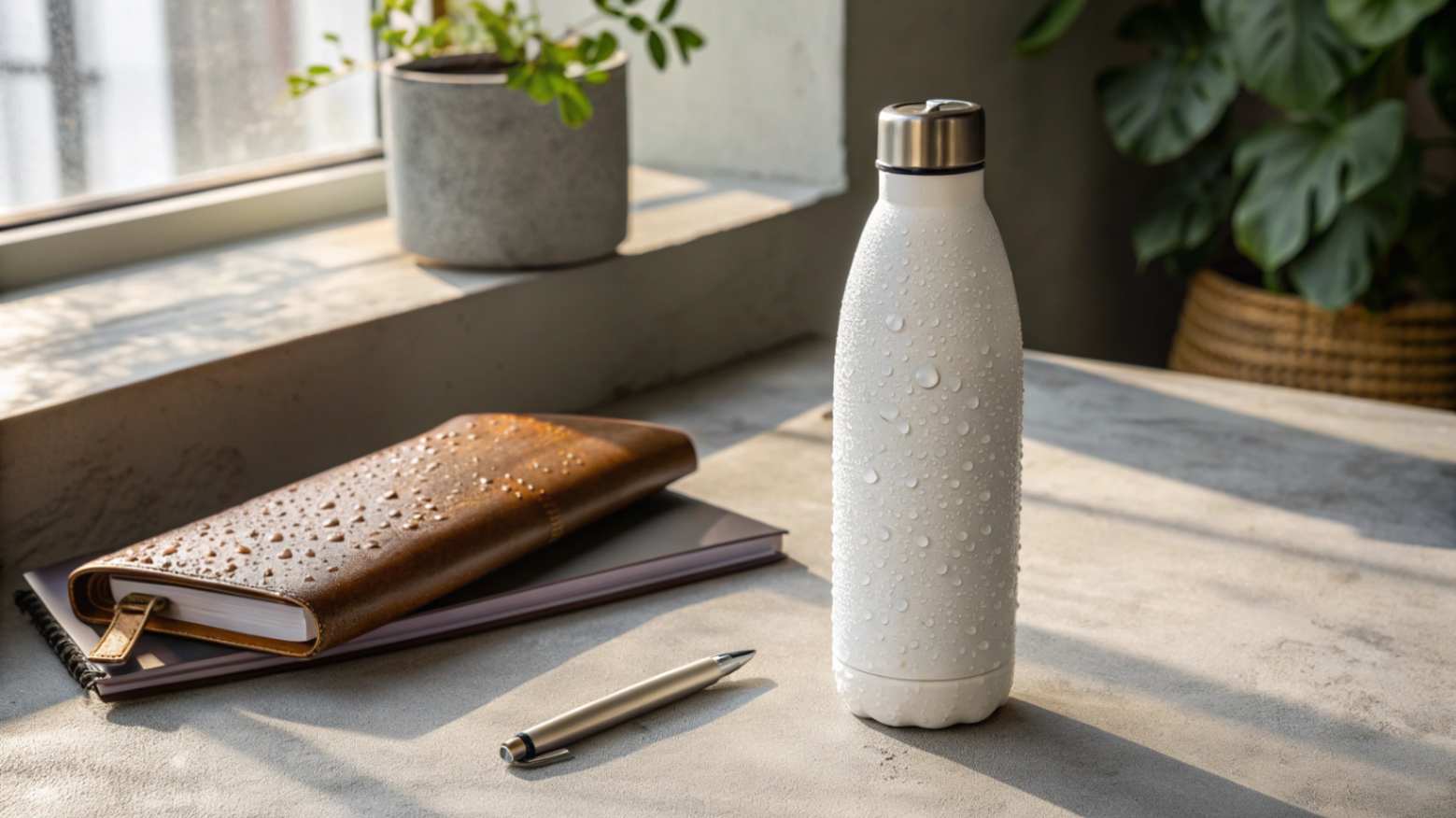
The ceramic coating process involves fusing ceramic particles to the steel surface at high temperatures. This creates a permanent, non-porous layer that cannot chip or wear away under normal use. The coating thickness typically measures 20-30 microns, providing complete coverage.
Technical Advantages of Ceramic Barriers
Standard stainless steel has microscopic surface irregularities. These tiny valleys can trap beverage residues and allow chemical reactions. Ceramic coating fills these irregularities, creating a perfectly smooth surface.
| Coating Property | Impact on Taste | Durability Benefit |
|---|---|---|
| Non-porous surface | No flavor absorption | Easy cleaning |
| Chemical inertness | Zero taste transfer | Long-term stability |
| Smooth finish | No residue buildup | Scratch resistance |
| High-temp fusion | Permanent bonding | Chip resistance |
Real-World Performance
I tested ceramic-coated bottles with various beverages over six months. Coffee, orange juice, sports drinks, and wine all maintained their original taste profiles. Standard steel bottles showed noticeable flavor changes within two weeks of regular use.
The ceramic coating also prevents odor retention. This means your customers can switch between different beverages without cross-contamination. A bottle used for coffee in the morning can hold water in the afternoon without any residual taste.
Ceramic coating prevents metal ions from leaching into beverages.True
The passage states that the ceramic coating creates a glass-like barrier that prevents metal ions from leaching into the beverage.
Ceramic coating changes the taste of beverages.False
The passage states that the ceramic coating maintains beverage purity and eliminates the metallic aftertaste, not that it changes the taste of the beverage.
Is the Ceramic Lining in Water Bottles Durable and Chip-Resistant
Ceramic coating durability depends entirely on the application process. High-quality ceramic coatings fused at proper temperatures create permanent bonds with the steel substrate. These coatings resist chipping, scratching, and wear.
Professional-grade ceramic coatings withstand normal use for years without degradation. The key is proper application temperature and ceramic particle size, which create molecular-level bonding with the steel surface.
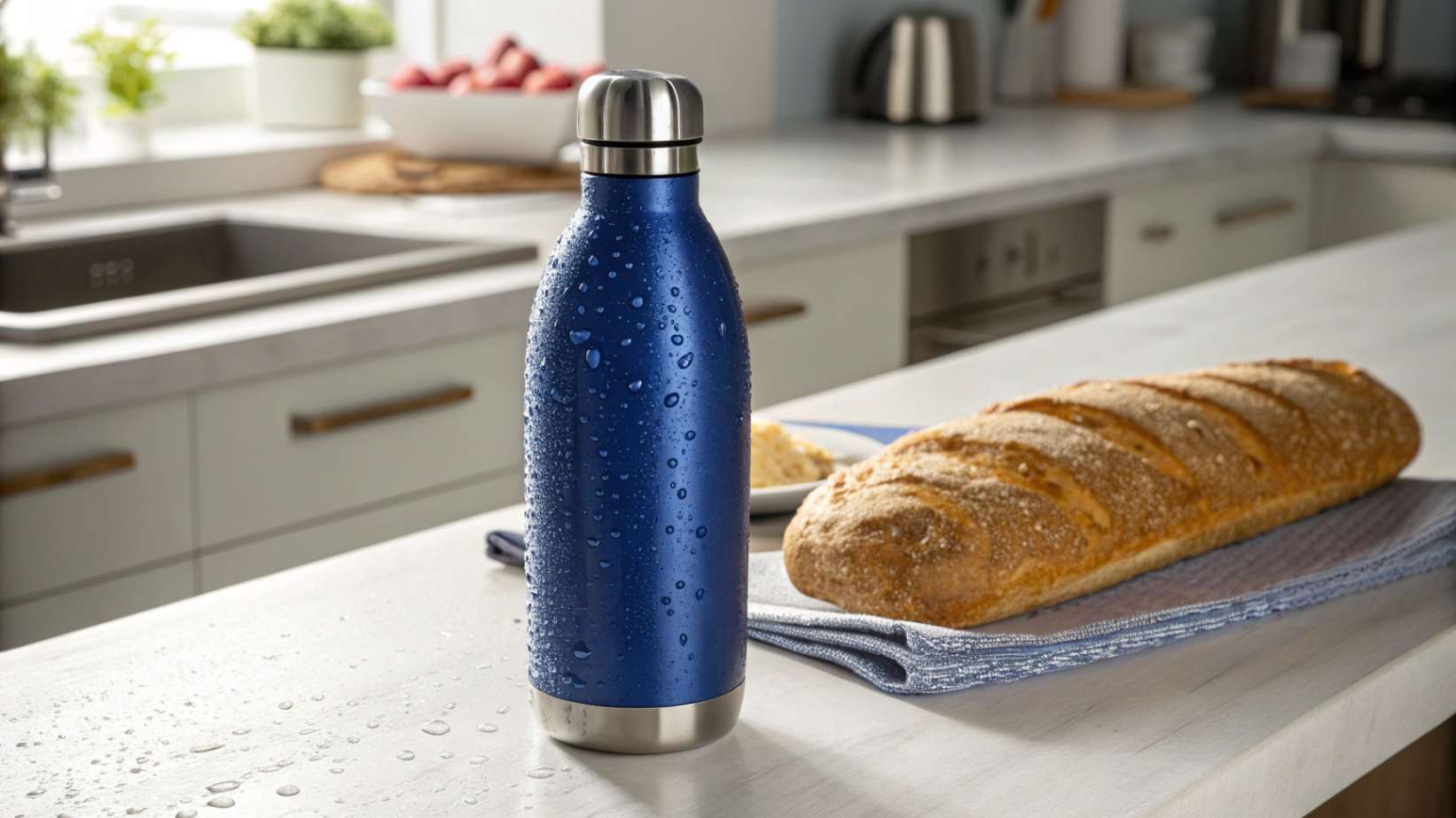
At our factory, we test ceramic coating durability through multiple methods. Drop tests simulate accidental impacts. Scratch tests measure surface hardness. Thermal cycling tests check coating stability under temperature changes. Our ceramic coatings pass all industry standards.
Durability Testing Results
| Test Type | Standard | Our Results | Performance Rating |
|---|---|---|---|
| Drop Test | 1.5m height | 2.0m height | Exceeds standard |
| Scratch Resistance | 6H pencil hardness | 7H pencil hardness | Superior |
| Thermal Cycling | 500 cycles | 1000+ cycles | Excellent |
| Dishwasher Safe | 100 cycles | 500+ cycles | Outstanding |
Manufacturing Quality Control
The ceramic application process requires precise temperature control. We maintain coating temperatures between 800-900°C to ensure proper fusion. Lower temperatures create weak bonds that chip easily. Higher temperatures can damage the steel properties.
Ceramic particle size also affects durability. We use particles between 1-5 microns for optimal coverage and bonding. Larger particles create uneven coatings. Smaller particles may not achieve proper adhesion.
Quality control includes visual inspection, thickness measurement, and adhesion testing for every batch. This ensures consistent durability across all products. We have never had a ceramic coating failure in normal use conditions.
Professional-grade ceramic coatings are durable and chip-resistant.True
The passage states that properly applied high-quality ceramic coatings resist chipping, scratching, and wear.
All ceramic coatings are equally durable and chip-resistant.False
The passage specifies that durability depends on the application process, temperature, and ceramic particle size.
Are Ceramic Coated Stainless Steel Bottles Safe for Hot and Cold Drinks
Ceramic coatings excel at temperature resistance. The ceramic material maintains stability from -20°C to 200°C without any degradation. This range covers all beverage temperatures from ice water to hot coffee.
Ceramic-coated bottles safely handle both hot and cold beverages without coating damage or chemical leaching. The ceramic barrier remains stable across all beverage temperatures, maintaining safety and taste neutrality.

Temperature safety comes from ceramic's inherent properties. Unlike plastic coatings that can release chemicals when heated, ceramic remains completely inert at all beverage temperatures. This makes ceramic-coated bottles safer than many alternatives.
Temperature Performance Comparison
| Material | Safe Cold Temp | Safe Hot Temp | Chemical Leaching Risk |
|---|---|---|---|
| Ceramic Coating | -20°C | 200°C | None |
| Plastic Lining | 0°C | 70°C | Possible when hot |
| Standard Steel | -20°C | 200°C | Metallic taste risk |
| Glass | -10°C | 100°C | Thermal shock risk |
Safety Certifications
Our ceramic coatings meet FDA, LFGB, and REACH safety standards. These certifications confirm that the coating materials are food-safe and non-toxic. Independent testing verifies no heavy metals or harmful substances in the ceramic formulation.
The ceramic coating also prevents bacterial growth better than standard steel. The smooth, non-porous surface provides fewer places for bacteria to attach and multiply. This makes ceramic-coated bottles more hygienic for daily use.
Ceramic coatings on stainless steel bottles are safe for hot and cold drinksTrue
The ceramic material maintains stability across the full range of beverage temperatures.
Ceramic-coated bottles can only safely handle hot drinks, not cold drinksFalse
The ceramic barrier remains stable for both hot and cold beverages.
What Makes a Ceramic Interior Easier to Clean and Maintain
The smooth ceramic surface creates significant cleaning advantages. Standard stainless steel has microscopic surface roughness that traps residues. Ceramic coating eliminates this roughness, creating a surface as smooth as glass.
Ceramic's non-porous, glass-like surface prevents residue buildup and bacterial attachment. This makes cleaning faster, more thorough, and requires less aggressive scrubbing than standard stainless steel interiors.

Cleaning ease translates to better hygiene and longer product life. When bottles are easier to clean, users maintain them better. This reduces bacterial growth and eliminates odors that can develop in poorly cleaned bottles.
Cleaning Performance Metrics
| Cleaning Aspect | Standard Steel | Ceramic Coated | Improvement |
|---|---|---|---|
| Rinse Efficiency | 60% residue removal | 95% residue removal | 58% better |
| Scrubbing Required | Medium pressure | Light pressure | 50% less effort |
| Bacterial Attachment | Moderate | Minimal | 70% reduction |
| Odor Retention | Common | Rare | 80% improvement |
Maintenance Benefits for B2B Buyers
Easy cleaning creates multiple B2B advantages. First, it reduces customer complaints about hygiene issues. Second, it extends product life, improving customer satisfaction. Third, it reinforces the premium positioning through superior user experience.
I have seen many B2B buyers choose ceramic coating specifically for maintenance benefits. Corporate wellness programs value the hygiene advantages. Gift buyers appreciate that recipients will actually use and maintain the bottles long-term.
The ceramic surface also resists staining from beverages like coffee, tea, or fruit juices. Standard steel can develop permanent discoloration that makes bottles look old and unclean. Ceramic maintains its appearance indefinitely with normal cleaning.
Ceramic interiors are easier to clean than stainless steelTrue
Ceramic's smooth, non-porous surface prevents residue buildup and bacterial attachment, making cleaning faster and more thorough.
Ceramic interiors are more durable than stainless steelFalse
The article does not mention anything about the durability of ceramic compared to stainless steel.
How Does a Ceramic Lined Bottle Compare to Glass or Plastic Options
Ceramic coating combines the best properties of multiple materials. It provides glass-like taste neutrality with steel's durability. It offers plastic's easy cleaning with ceramic's premium feel. This combination creates unique value.
Ceramic-coated steel bottles deliver superior performance compared to glass (no breakage risk), plastic (no chemical concerns), and standard steel (no metallic taste) while maintaining the durability and insulation properties that make stainless steel the preferred choice.
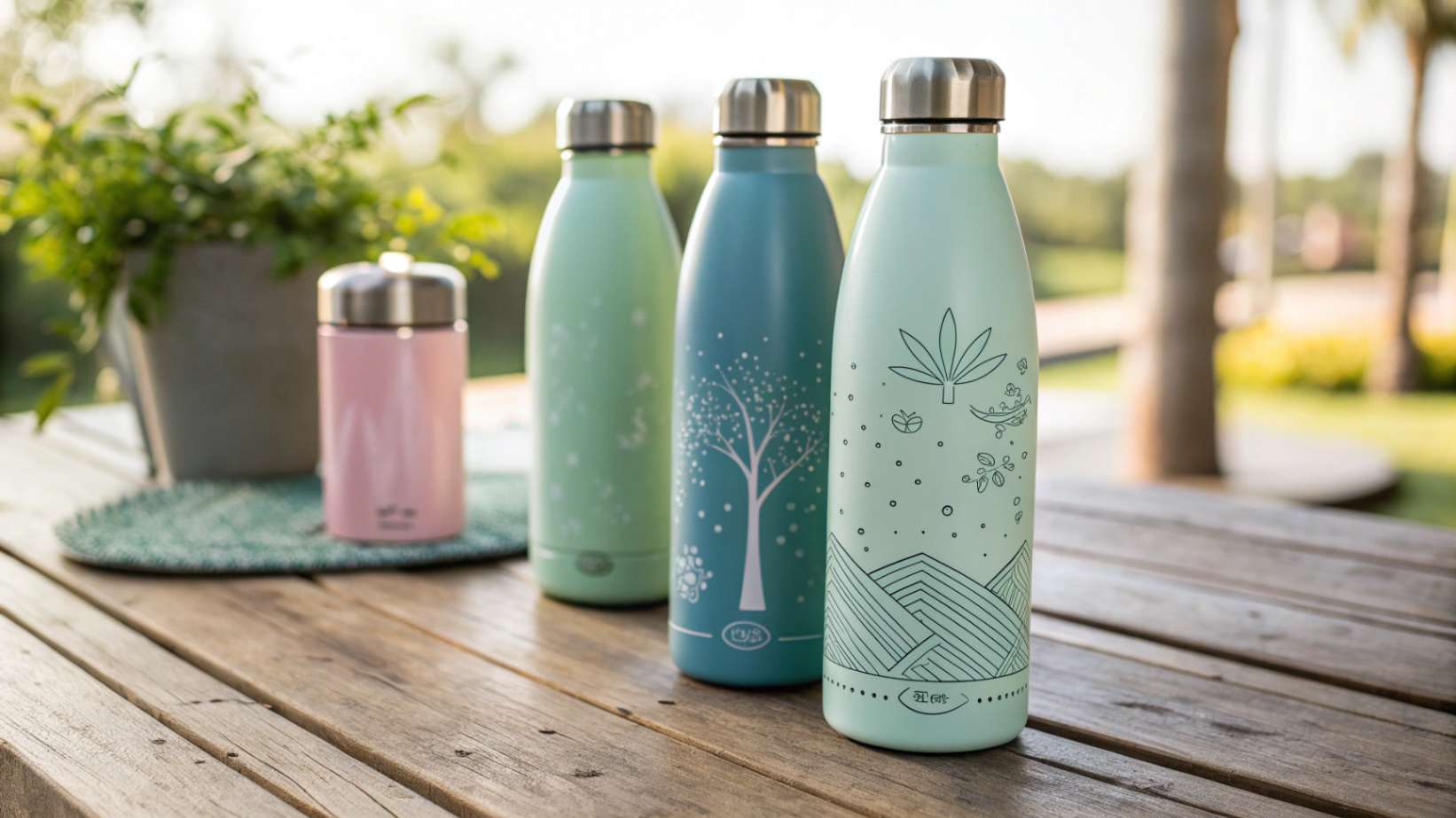
Material choice significantly impacts B2B success. Glass bottles break easily and create liability concerns. Plastic bottles raise health questions and feel cheap. Standard steel bottles lack differentiation. Ceramic coating solves all these problems.
Comprehensive Material Analysis
| Performance Factor | Glass | Plastic | Standard Steel | Ceramic-Coated Steel |
|---|---|---|---|---|
| Taste Neutrality | Excellent | Poor | Fair | Excellent |
| Durability | Poor | Good | Excellent | Excellent |
| Safety Perception | Good | Poor | Good | Excellent |
| Insulation | Poor | Poor | Excellent | Excellent |
| Premium Appeal | Good | Poor | Fair | Excellent |
| Cost Efficiency | High | Low | Medium | Medium-High |
Market Positioning Advantages
Ceramic coating creates a unique market position. It offers premium benefits without premium material costs. This allows B2B buyers to differentiate their products while maintaining reasonable pricing.
The ceramic coating story also resonates with health-conscious consumers. It combines the safety message of glass with the practicality of steel. This positioning appeals to premium markets without the drawbacks of alternative materials.
From my experience, ceramic-coated bottles command 20-30% higher prices than standard steel bottles. This price premium reflects genuine value rather than just marketing positioning. The performance benefits justify the cost difference.
Ceramic-coated steel bottles have advantages over glass, plastic, and standard steel bottles.True
The passage states that ceramic-coated steel bottles combine the benefits of multiple materials, providing superior performance.
Ceramic-coated steel bottles are more expensive than glass, plastic, and standard steel bottles.False
The passage does not mention the relative cost of ceramic-coated steel bottles compared to other options.
Conclusion
Ceramic-coated stainless steel bottles provide taste neutrality, affordable premiumization, and superior hygiene benefits that create clear B2B sourcing advantages over standard alternatives.
